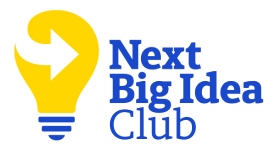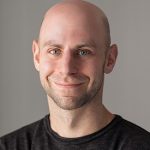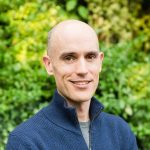Julia Hotz is a solutions focused journalist based in New York. Her stories have appeared in The New York Times, WIRED, Scientific American, The Boston Globe, Time, and more. She helps other journalists report on the big new ideas changing the world at the Solutions Journalism Network.
Below, Julia shares five key insights from her new book, The Connection Cure: The Prescriptive Power of Movement, Nature, Art, Service, and Belonging. Listen to the audio version—read by Julia herself—in the Next Big Idea App.
1. Social prescribing helps us rethink sickness—less as fixed disorders in the body and more as “reactions” to a stressful environment.
Social prescribing is a big new idea. But it’s rooted in a big old idea: the idea that our environment influences our health, for worse and for better.
Ancient philosophers, Indigenous thinkers, holistic medical experts, and positive psychologists have been independently preaching this idea for thousands of years. Large-scale population studies tell us it’s true: up to 80 percent of our health is socially determined by factors like where we live, with whom we live, and how we live. To be healthy, we need basic resources—food, cash, a safe home, a stable job. But we also need sources of joy, meaning, and relationships: Is there someone we can call at 3 a.m. in a crisis? Do we have a reason to wake up in the morning? Do we have outlets to cope with the sadness, anger, and fear that come with being human?
The data tells us having sources of well-being, a sense of purpose, and meaningful relationships can significantly influence our health and longevity. But the opposite is also true: if our environments don’t meet these psychological needs, we’re more likely to get sick. And since we’re experiencing overlapping epidemics of depression, anxiety, ADHD, addiction, and lifestyle illnesses, there’s reason to believe they’re related and that our environments are part of the problem.
The earliest version of our Diagnostic and Statistical Manual of Mental Disorders (DSM) acknowledged this relationship; more than depression, anxiety, or attention-deficit disorders, you had depressive, anxious, and hyperkinetic “reactions.” Your sickness was seen less as a fixed set of symptoms ruled by biological factors in a body, and more as a response to all kinds of biopsychosocial stressors in an environment.
But just as some environments can make us feel sick, other environments help us feel better, which leads us to insight number two.
2. Social prescribing helps us rethink treatment—guided less by “What’s the matter with you?” and more by “What matters to you?”
Think back to your first doctor’s visit. You probably had some mild bacterial infection, like strep throat. Chances are, your doctor ran a test, gave you a diagnosis, and prescribed you antibiotics.
This sort of diagnose-and-treat method works for some sicknesses. It’s why we don’t have epidemics of strep throat. But because we do have epidemics of lifestyle and mental illnesses, we need to think differently about how we diagnose and treat them. It’s true: medication and therapy can help some of us cope with some of these symptoms, sometimes. But until we also address the environment that contributed to these illnesses, we stand little chance of treating them in the long term. As famed British epidemiologist Michael Marmot asks: “Why treat people and send them back to the conditions that made them sick?”
“Instead of focusing on the symptoms that make us feel sick, which can cause us to ruminate and feel worse, we should focus on the environments that make us feel well.”
So, until we improve those living conditions across the board, here’s what health workers and patients can do in the meantime: instead of focusing on the symptoms that make us feel sick, which can cause us to ruminate and feel worse, we should focus on the environments that make us feel well.
This is what social prescribing does. Instead of asking, “What’s the matter with you?” health workers ask their patients, “What matters to you?” They try to understand: What makes you light up? What totally absorbs your attention? What did you love in your childhood but haven’t had a chance to do since? Based on those answers, health workers prescribe their patients a local community activity.
3. Social prescriptions for movement, nature, art, service, and belonging can improve our health.
Social prescriptions help us feel better not only because they’re reconnecting us with something that matters to us but also because that activity typically reconnects us to movement, nature, art, service, or belonging—five of the core ingredients we evolved to seek, and need to thrive
Imagine a day in the life as a hunter-gatherer. To meet your basic needs for food, water, and shelter, you had to move your body and pay attention to nature. To meet your psychological needs for protection and resilience, you probably coped by telling stories, helping your neighbors, and organizing community rituals.
Today, thank goodness, living is much easier. But since our survival no longer requires us to move our bodies, spend time in nature, create art, serve our neighbors, and find belonging, most of us miss out on the health benefits those activities can bring.
Social prescribing can change that, right down to the chemical level. Moving our bodies can increase our production of endorphins, serotonin, and dopamine – chemicals linked with improved energy and mood. The same benefits hold for spending time in nature, which can also increase our production of the immune-boosting natural killer cells and reduce our production of the stress hormone cortisol. Creating and consuming art can reduce cortisol, too. And multiple studies find that volunteering, and having close social relationships, can increase our longevity – the mother of all health gains.
And so, when health workers prescribe activities involving movement, nature, art, service, and belonging, they prescribe real, science-backed medicine — the effects of which are sometimes comparable to pharmaceutical medicine. People can, and have, healed from the depths of their illnesses from social prescriptions. Beyond just reducing symptoms of their illness, social prescriptions can also help people find a more sustainable source of wellness.
4. Social prescriptions can improve health care.
Just as patients are dealing with depression, anxiety, and stress, so are their health workers, especially post-COVID. Part of that comes from the burnout and pressures in the field: to put it mildly, there are not enough doctors, not enough therapists, not enough hospital beds, not enough money, and not enough time to meet demand.
But part of the problem is the way patients are coming to medical professionals with nonmedical issues. In the UK, one in five doctor’s appointments are made for purely social reasons. Globally, seven of the 10 leading causes of death are from noncommunicable, lifestyle-related diseases. And so, social prescriptions help health workers treat their patients’ underlying nonmedical issues with nonmedical care. One model involves hiring link workers—a role that acts as a liaison between the doctor, the patient, and the local community. Instead of rushing the conversation and focusing just on symptoms, the link worker can get to know a patient, understand what matters to them, and offer a local social prescription tailored to their needs and interests.
“Even without health care, social prescriptions are a powerful form of self-care.”
The data shows social prescribing models, particularly in the UK, can reduce hospitalizations, emergency room visits, and doctors’ appointments and save money in the long term. Anecdotally, it can also improve doctors’ morale. And all of this reduces pressure on health care.
This is why all kinds of healthcare systems all around the world—from Singapore to Portugal, from Canada to the Netherlands, to, yes, even pockets of the United States—are introducing their own models of social prescribing.
But even without health care, social prescriptions are a powerful form of self-care, which leads to our final insight.
5. Social prescriptions are a gateway drug to help all of us get well.
We know now that our modern living conditions and environments are making lots of people sick. But even if we don’t develop a disorder, most of us haven’t been feeling well, especially since the pandemic. The data finds more of us feel stressed, languishing, pessimistic about the future, and lonely.
This is where social prescriptions can help, and I would know. To help cope with my own bouts of sadness, distraction, worries, frustrations, and loneliness, I prescribed myself movement, nature, art, service, and belonging. And just as they helped patients, they helped me, too. An early morning running group helped me overcome a breakup and feel less stuck. A birdwatching club helped me deal with frazzled, 50-tabs-open focus issues and restore my attention. A slow-looking museum tour helped me reframe my anxieties about the future and recognize the beauty in my present. A day spent volunteering at a community garden helped me stop feeling angry and start feeling lighter. And a group brokering deep conversation among strangers helped me confront my fear of loneliness and reminded me of how we all belong to the ups and downs of the human experience.
I’m sure the neurochemicals were at play. But really, what social prescriptions did for me—and what I believe they can do for you—is offered some perspective. They helped me see my suffering as temporary and my moods as passing. They helped me become more present and reminded me of what really matters.
To listen to the audio version read by author Julia Hotz, download the Next Big Idea App today:










